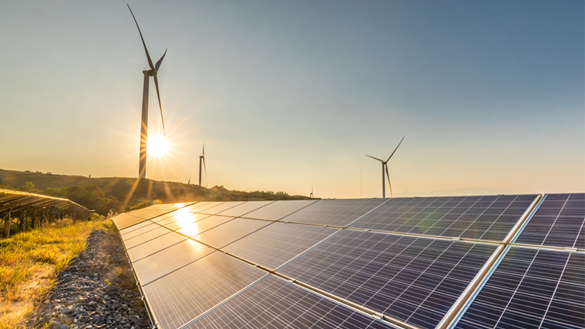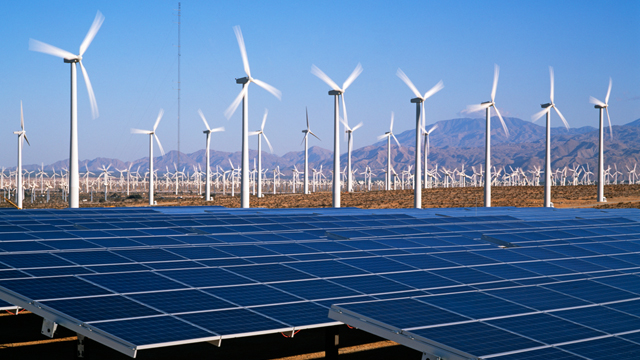What is net zero?
We’ve all heard the term net zero, but what exactly does it mean?
Put simply, net zero refers to the balance between the amount of greenhouse gas (GHG) that's produced and the amount that's removed from the atmosphere. It can be achieved through a combination of emission reduction and emission removal.

What does it mean to be net zero?
Think about it like a bath – turn on the taps and you add more water, pull out the plug and water flows out. The amount of water in the bath depends on both the input from the taps and the output via the plughole. To keep the amount of water in the bath at the same level, you need to make sure that the input and output are balanced.
Reaching net zero applies the same principle, requiring us to balance the amount of greenhouse gases we emit with the amount we remove. When what we add is no more than what we take away, we reach net zero.
Why is net zero important?
From countries and companies to individuals, tackling climate change is at the top of the agenda. Action taken to limit emissions in the next decade will be critical to the future, which is why every country, sector, industry and each one of us must work together to find ways to cut the carbon we produce.
Read more about why reaching net zero is so important
Is net zero the same as carbon neutral?
No. Although 'net zero' and 'carbon neutral' are often referred to interchangeably, and both result in CO2 being removed from the environment, the two terms are not the same.
You’ve most likely heard the term ‘carbon neutral’ being used when referring tobusinesses. In this case, it’s often referring to their ambition to limit any increase in future carbon emissions, while using offsets to neutralise existing emissions.
‘Net zero’ on the other hand places much more focus on reducing carbon emissions as much as possible first, and only offsetting unavoidable, residual CO2 as a last resort.
Organisations such as the Science Based Target initiative (SBTi) have developed pathways for companies to validate their net zero greenhouse gas reduction targets, and ensure they’re aligned with what science deems necessary to limit global warming to 1.5°C in the near-term.
Find out more about the difference between carbon neutral and net zero
What’s the difference between gross zero and net zero?
‘Gross zero’, also known as ‘real zero’ refers to industry sectors (such as the energy sector) aiming to completely eliminate carbon emissions from their operations.
At National Grid, we’re striving for our operational emissions to reach zero in absolute terms, rather than relying on large-scale offsetting or unproven removal technologies to meet our long-term climate commitments.
Through the actions outlined in our Climate Transition Plan, we believe that the decarbonisation of power grids in the 2030s and our clean energy vision of fossil-free US gas networks by 2050 will enable us as a company to get close to real zero, with only small residual emissions in sectors that currently look hard to abate, such as elements in our upstream supply chain, and where UK and US national plans still have emissions in 2050.
What is climate change?
Evidence shows that our planet has been getting hotter. The warmest 20 years on record have been in the last 22 years according to the World Meteorological Organisation and the warmest four were all very recent: 2015 to 2020. Global average temperatures are now 1.2°C (2.16°F) higher than in the pre-industrial era.
A degree doesn’t sound like a lot, but the reality is that this incremental warming already appears to be having a negative impact. What’s more, if recent trends continue, this is set to worsen, with predictions of global temperatures increasing by as much as 2.7°C (4.86°F) by 2100.
Even with this tiny rise in global temperatures we are feeling the effects of climate change with erratic weather patterns including heatwaves, floods and severe storms, loss of polar ice, and rising sea levels. This will only get worse if global warming intensifies.
What are the causes of climate change?
It’s widely recognised by scientists and governments that climate change is being triggered by higher levels of greenhouse gases in the atmosphere. Their name derives from the greenhouse effect they create by warming the Earth’s surface and the air above it. This is caused by gases that trap energy from the sun. The most common greenhouse gases are water vapour, carbon dioxide (CO2) and methane.
CO2 is the most dangerous and abundant of the greenhouse gases, which is why cutting carbon emissions, carbon footprints or seeking low-carbon alternatives should help to tackle climate change. This can be done in two ways:
Lowering the emissions we’re sending into the atmosphere, from activities such as industrial processes, power generation, transport and intensive agriculture.
Removing greenhouse gas emissions from the atmosphere, for example by capturing carbon that’s created during industrial processes, or by planting more trees.
Last updated: 23 Feb 2023
The information in this article is intended as a factual explainer and does not necessarily reflect National Grid's strategic direction or current business activities.



